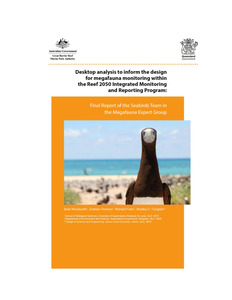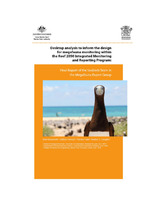Please use this identifier to cite or link to this item:
https://hdl.handle.net/11017/3599

| Title: | Desktop analysis to inform the design for megafauna monitoring within the Reef 2050 Integrated Monitoring and Reporting Program: final report of the seabirds team in the megafauna expert group |
| Authors: | Woodworth, B. Hemson, G. Fuller, R. Congdon, B.C. University of Queensland Department of Environment and Science (Qld) James Cook University |
| metadata.dc.subject.asfa: | Birds (marine) Monitoring |
| metadata.dc.subject.location: | Reef-wide |
| metadata.dc.subject.category: | Animals |
| Year of publication: | 2019 |
| Publisher: | Great Barrier Reef Marine Park Authority |
| Series/Report no.: | Megafauna Expert Group (RIMRep) Reef 2050 |
| Abstract: | [Extract] The current seabird monitoring strategy for the Great Barrier Reef Marine Park is the Coastal Bird Monitoring and Information Strategy - Seabirds 2015-2050 (CBMIS-2015). This strategy is built around monitoring breeding populations of indicator species that represent different feeding guilds at identified essential breeding sites. Patterns of visitation aim to maximise the likelihood of surveys coinciding with the breeding of 20 species while minimising operational effort. Of necessity, the overall strategy is a compromise between the number of sites, visitation rates and logistic constraints. The Reef 2050 Integrated Monitoring and Reporting Program (RIMReP) review process undertaken here assesses whether the CBMIS-2015 strategy, designed within these constraints, is adequate to meet the needs of the Reef 2050 Long-Term Sustainability Plan (Reef 2050 Plan). |
| URI: | https://hdl.handle.net/11017/3599 |
| ISBN: | 9780648721451 |
| Type of document: | Report |
| Appears in Collections: | Ecosystems |
Files in This Item:
| File | Description | Size | Format | |
|---|---|---|---|---|
| RIMReP Seabirds report.pdf | Main document (PDF) | 13.55 MB | Adobe PDF |  View/Open |
This item is licensed under a Creative Commons License

